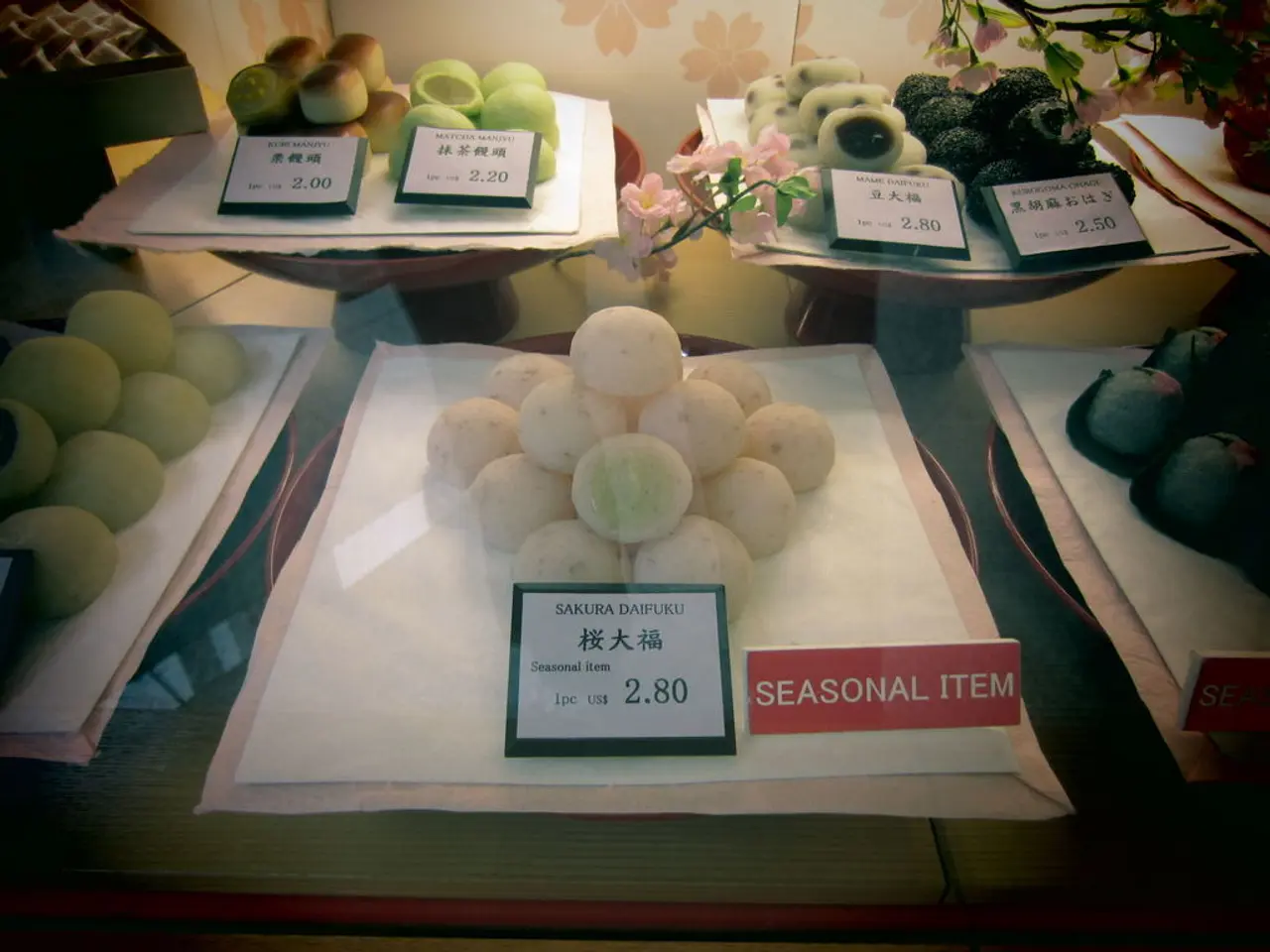Domestic Products Have Been Increasing in Price Compared to Imports
Article: Decline in Imported Goods Prices Unaffected by Tariffs, According to CEA
In a recent analysis, the Council of Economic Advisers (CEA) has found that the decline in prices of imported goods in the Personal Consumption Expenditure Price Index (PCEPI) has not been influenced by tariffs or tariff-fears.
The CEA decomposed the PCEPI into imported and domestic components, and their findings suggest a decrease in the impact of imported goods on overall inflation. The prices of imported goods have fallen this year, with a decline observed since February, while overall goods prices have increased by 0.4 percent from December 2024 through May 2025, corresponding to a 1 percent annualized rate.
The imported component of PCE goods prices fell by 0.1 percent during the same period. This decline is consistent across core goods (excluding food and energy), durables, and nondurables in the CEA's analysis.
The CEA's findings challenge the assumption that increased tariffs would lead to higher inflation. The main reason for the decline in imported goods prices, according to the CEA, is that firms, facing weak consumer demand and competition, have largely absorbed tariff costs rather than passing them on, leading to restrained or declining prices in these categories.
The slowing or decline in import prices is also linked to reduced import volumes in some sectors, which affects aggregate measured prices in the PCE index. Early tariff-driven price surges in the first quarter of the year subsided in the second quarter as the initial rush to beat tariffs passed, resulting in slower price increases or price declines in imported goods.
The PCE price index for goods has seen some price declines or only modest increases in certain durable goods categories like vehicles, auto parts, and phones, reflecting firms’ price adjustments in response to consumer resistance amid inflation pressures. While overall PCE inflation accelerated in some sectors, price pressures on goods, particularly imported ones, have been weaker or even negative at times, demonstrating difficulties firms face in increasing prices despite tariffs.
The Personal Consumption Expenditure Price Index (PCEPI) is an inflation gauge closely watched by policymakers and financial markets. It measures the change in prices of goods and services purchased by consumers. There are differences between PCE and Consumer Price Index (CPI) inflation, including the scope of products included and weighting methodologies. However, similar analysis for the CPI shows that imported goods have deflated 0.8 percent while overall goods prices have remained constant, highlighting the robustness of the CEA's findings.
The import contribution to inflation includes both the direct impact of imported final goods for consumption and indirect effects of imported intermediate inputs. The CEA's findings contradict claims that tariffs or tariff-fears would lead to an acceleration of inflation.
The CEA's analysis is based on data up to the current year. The findings challenge the assumption that increased tariffs would lead to higher inflation, as the decline in imported goods prices is not due to tariffs or tariff-fears. The decline in imported goods prices, instead, is a result of market conditions where consumer demand is sensitive, and firms must lower or hold prices to maintain sales, especially in categories like automobiles where sales are struggling. Automakers, for example, have absorbed tariff costs instead of passing them onto consumers, cutting prices and offering deals to sustain sales. This dynamic constrains pass-through of tariffs into consumer prices, causing imported goods prices in the PCE index to fall or rise less than expected despite tariffs.
- Despite the tariffs, the decline in prices of imported goods, such as vehicles and phones, has been observed in the Personal Consumption Expenditure Price Index (PCEPI), with firms absorbing the tariff costs and reducing or holding prices to maintain sales.
- The decline in imported goods prices, as seen in industries like finance (automotive), is not due to tariffs or tariff-fears, according to the CEA, but rather a result of market conditions where firms must lower prices to attract consumers.








